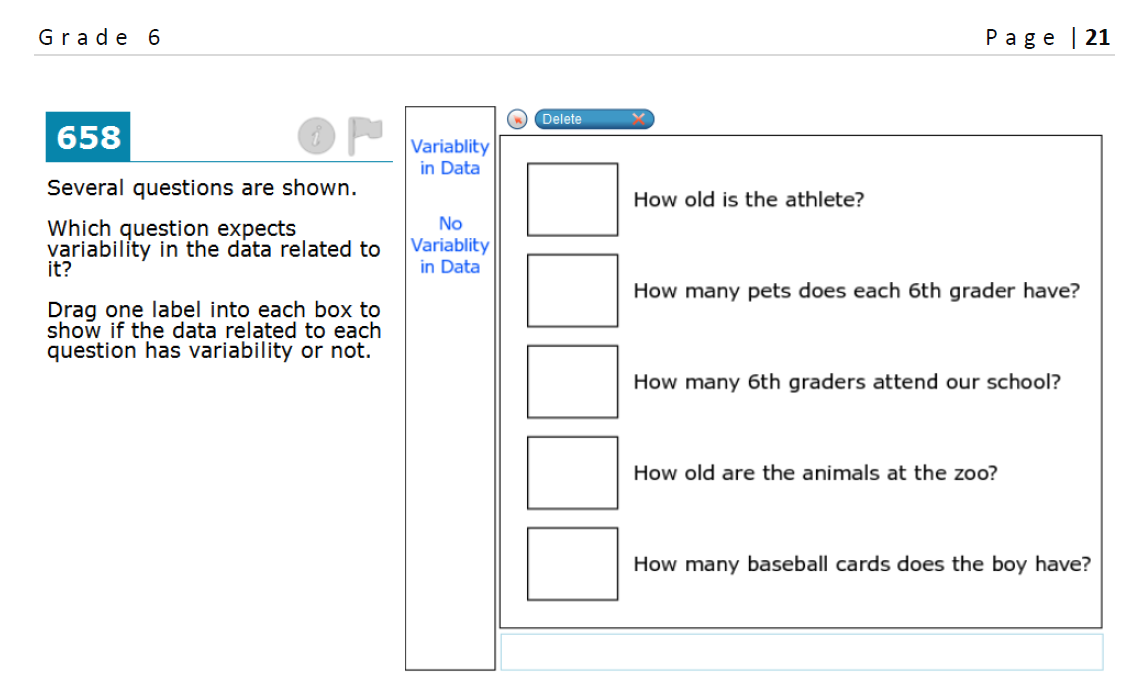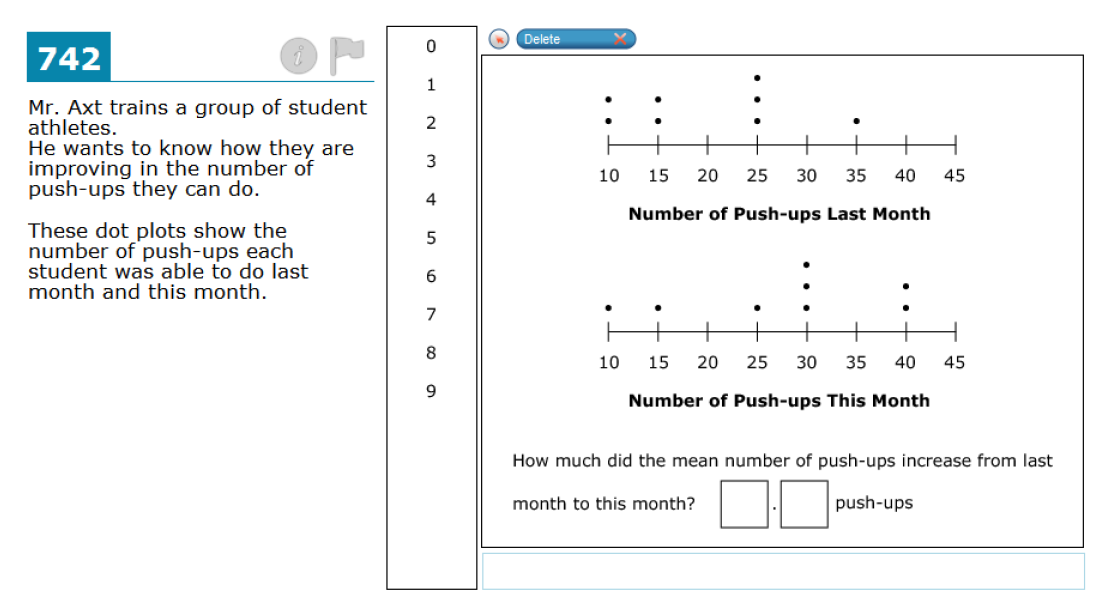Each state that has adopted Common Core State Standards will select an assessment consortium to assess how children are progressing in school. The two options most widely chosen at this point are: Smarter Balanced and PARCC. Each assessment consortium has provided practice test questions and today we will review one of these questions and discuss its potential impact on classroom instruction.
Below is an assessment question from Smarter Balanced grade 6. Smarter Balanced uses two types of assessment questions: Selected Response and Constructed Response.
- Selected Response requires the students to select one or more correct answers.
- Constructed Response requires the students to create their own answer.
Sixth Grade Statistical Questions
Common Core Standards Assessed
6.SP.1 Recognize a statistical question as one that anticipates variability in the data related to the question and accounts for it in the answers. For example, “How old am I?” is not a statistical question, but “How old are the students in my school?” is a statistical question because one anticipates variability in students’ ages.
This item assesses one sixth-grade standard. To correctly answer this item, students must be able to differentiate between a statistical question (one that expects variability in the data) and a non-statistical question (one that has no variability in the data).
Solution
From Smarter Balanced Scoring Guide
For this item, a full-credit response (1 point) includes:
- “Variability in Data” next to “How many pets does each 6th grader have?” and “How old are the animals at the zoo?”
AND
- “No Variability in Data” next to “How old is the athlete?”, “How many 6th graders attend our school?” and “How many baseball cards does the boy have?”
For full credit, students must correctly identify all questions which have Variability in Data and all questions which have No Variability in Data. No partial credit is given on this particular item.
What do we learn from this item?
This question is assessing if the students understand that a question that anticipates variability refers to a question that results in multiple quantities.
Interestingly, two options in this item are related to age. Students without thorough understanding of the concept of statistical questions may be tempted to answer these items the same way because of similar superficial mobile casino elements.
Example
“How old is the athlete?” is a question referring to a single individual so it will only have one answer.
“How old are the animals at the zoo?” refers to multiple subjects, so variation in the answers is expected.
How is this concept assessed in other grades?
This particular concept is not directly assessed in other grades. However, thorough understanding of statistical questions gives students a foundational understanding of how data is collected. This understanding will lead to better success on questions related to data sets assessed in future grades.
Example
In this 7th-grade assessment question students must understand that the data collected in each data set answers the statistical question “How many push-ups can the students in Mr. Axt’s class do?” Knowing what question the data set answers allows students to better interpret the data in context.
Suggestions for classroom instruction
As this is a purely concept based question, students must be taught what a statistical question is, and how to differentiate a statistical question from a non-statistical question. Defining the content vocabulary of statistical question, as well as providing both examples and non-examples (such as the ones provided in the standard) can be beneficial in developing the concept.

Excerpt from an EDI Lesson on statistical questions.
Citations
Smarter Balanced Practice Assessments




